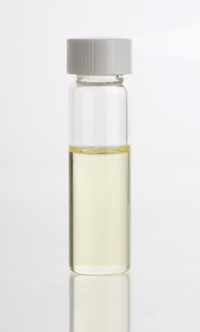
Photo from wikipedia
BACKGROUND Aromatic plants may be contaminated with a wide range of microorganisms, making them a potential health hazard when infused or added to ready-to-eat meals. To ensure safety, the effect… Click to show full abstract
BACKGROUND Aromatic plants may be contaminated with a wide range of microorganisms, making them a potential health hazard when infused or added to ready-to-eat meals. To ensure safety, the effect of gaseous ozone treatment on the population of aerobic plate counts (APC), hygienic indicators (Escherichia coli, Enterococcus spp. and Enterobacteriaceae) and fungi was investigated for five dried aromatic plants: oregano, thyme, mountain tea, lemon verbena and chamomile. Selection, isolation and further fungi identification were based on the phenotypic and macro- and microscopic characteristics. RESULTS Prior to ozonation, APC on five dried aromatic plants was in the range 5-7 log colony-forming units (CFU) g-1 . The APC exhibited a 4 log reduction, from around 6.5 to 2.5 in the case of oregano, and only a 1-2 log reduction for other herbs after 30 or 60 min of 4 ppm gaseous ozone treatment. Enterococcus spp. and E. coli were not detected on any of the tested dried aromatic plants. The fungi counts were 2-4 log CFU g-1 before ozonation. Aspergillus spp, Penicillium spp, Cladosporium spp, Alternaria spp, Fusarium spp., Ulocladium spp. and some unknown fungi were detected on plants before ozone treatment. Aspergillus spp. and/or Penicillium spp. were only detected on mountain tea and thyme plant material after 60 min of ozonation. CONCLUSION The present study provides information about the efficiency of ozone on the microbial decontamination of dried aromatic plants. Treatment with gaseous ozone at 4 ppm for 30 min in the case of dried oregano and 60 min in the case of chamomile and lemon verbena could be used as alternative disinfection methods. © 2017 Society of Chemical Industry.
Journal Title: Journal of the science of food and agriculture
Year Published: 2018
Link to full text (if available)
Share on Social Media: Sign Up to like & get
recommendations!